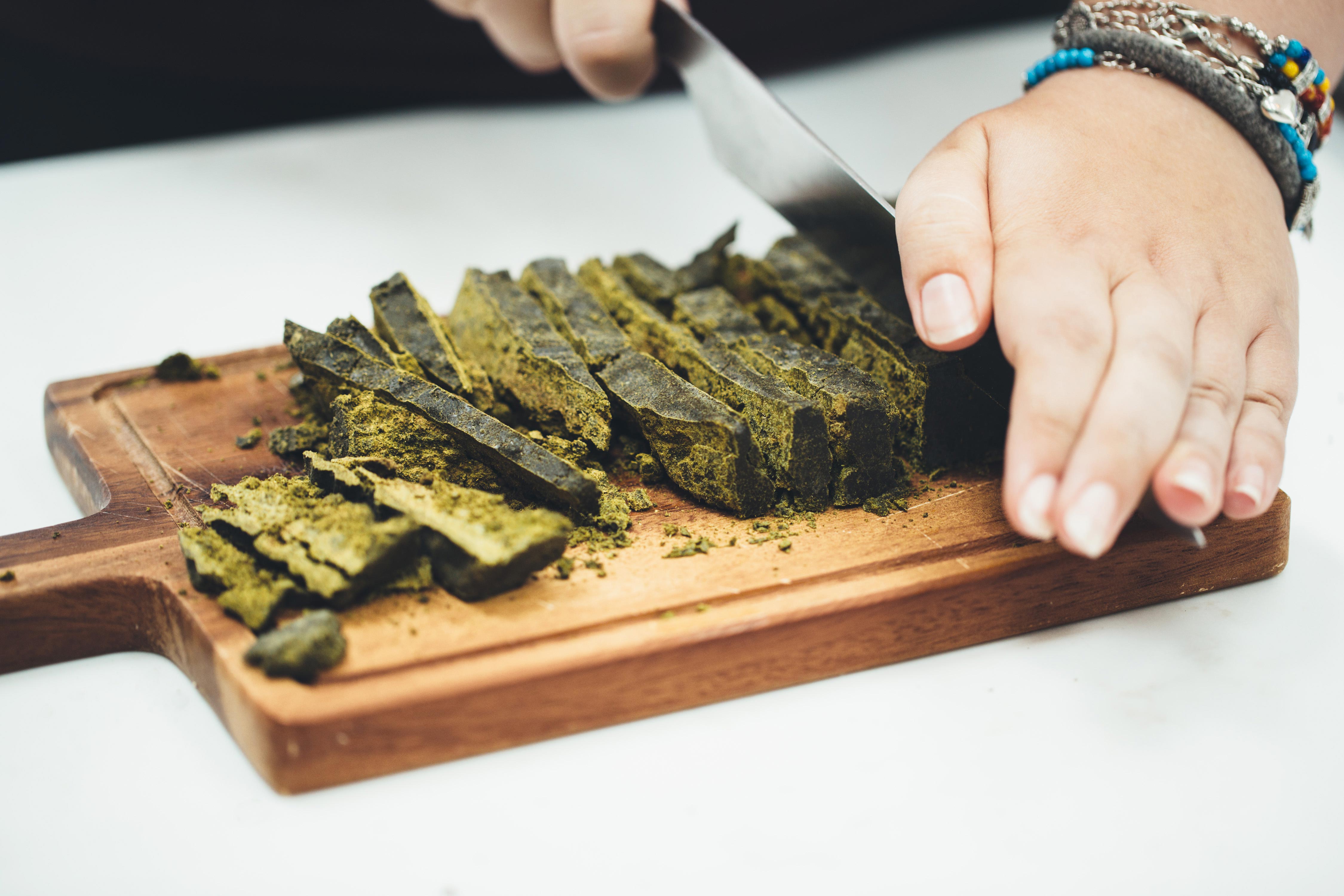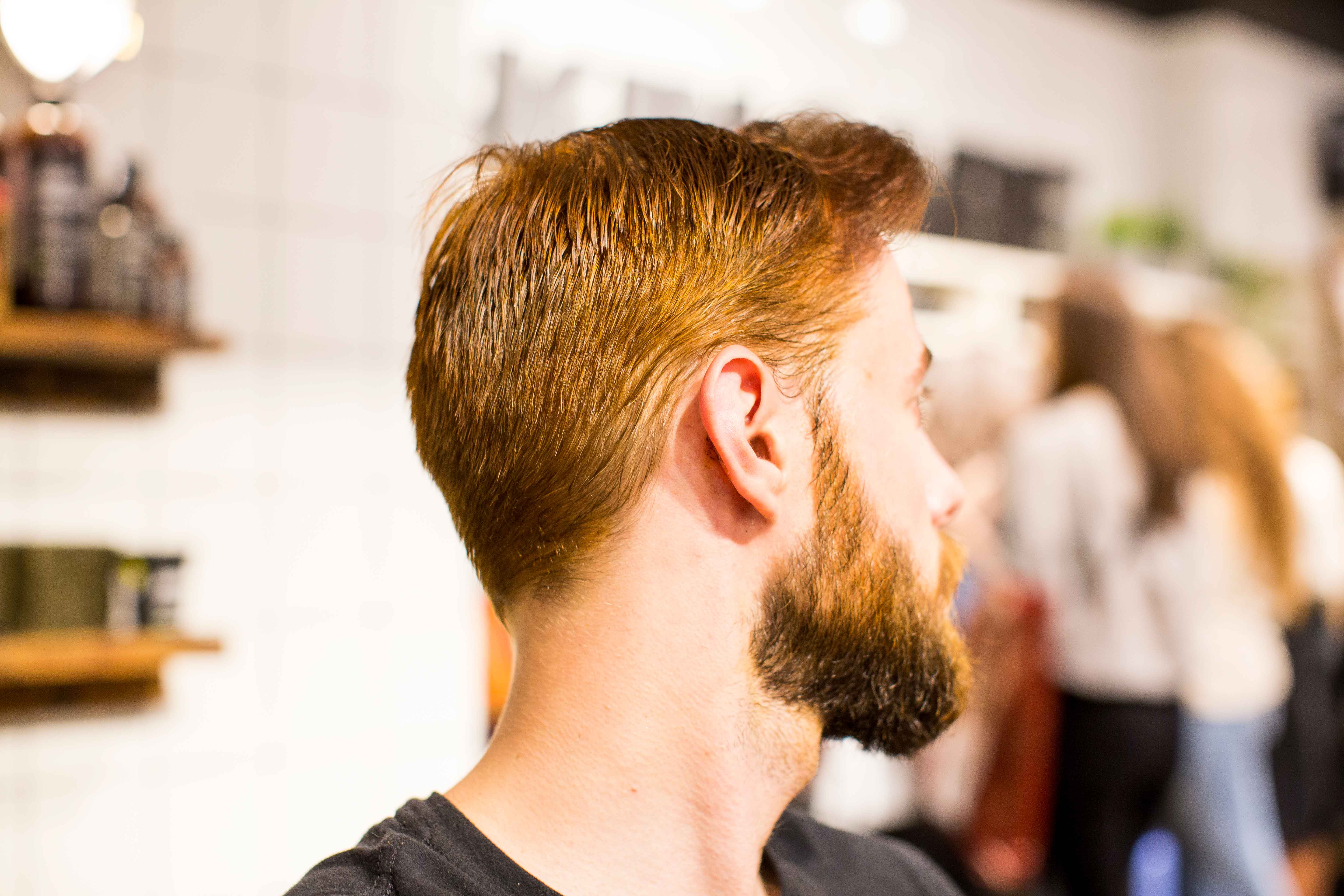Writer
Milly Ahlquist
Whether you’re bored with your box dye, seeking a natural alternative due to allergy, or just want healthy colour for your hair, henna's got you covered. You'll find all the answers to your common henna queries here.
Like many a good long-term relationship, henna hair dye requires commitment, but you can expect unbeatable colour, body and shine in return. If you are planning to give henna a try, it’s worth thinking realistically about your routine, whether you plan to perm or transition soon, or know you are going to want to go blue next month. We've tried to answer as many of your questions here so you can henna with confidence and love your results.
What is henna?
Lawsonia inermis is a flowering plant that contains an ancient pigment in its leaves capable of producing a rich, red to orange pigment. Commonly believed to be indigenous to northern Africa and Asia, henna been used to dye the hair, nails and skin for thousands of years.
What are the benefits of henna?
Where do we start? Henna is one of the few materials found in nature that has an affinity with the hair’s keratin, meaning it gives amazing lasting colour without the need for a chemical mordant which ‘fixes’ the colour in place. It is also a wonderful ingredient to use if you want to add body to the hair, increase shine, and make your locks look and feel beautifully healthy. It is both a treatment for the hair (use Brun on brown hair to see for yourself!) as well as a natural colourant.
How does henna work?
Henna plant leaves contain a compound called naphthoquinone: one of a group of natural pigments that are believed to be responsible for changing the colour of fertilised fruits and protecting plants against ultraviolet light, dryness and insects.
A dye is formed when the natural precursors in the henna leaf (known as hennosides) react to mildly acidic conditions, such as lemon juice, and oxidise. The lawsone then binds with the keratin in the hair cuticle, varnishing rather than penetrating the hair fibre.
Is Lush henna natural?
Lush henna bricks are composed of 100% natural ingredients, including the highest quality Iranian henna and indigo, and herbs and essential oils which benefit the hair and scalp.
Which colours are available for me to choose from?
Lush henna bricks are available in four shades, from the brightest red to inky black. You can mix and match these to subtly tailor your colour if you like.
Rouge contains no indigo, so it will provide a fiery red colour which varies in intensity depending on your natural colour. Very fair hair will have the brightest results. Rouge is also an essential base coat if you are going from fair to dark (see What will happen if I henna my blonde or white hair?) or covering a high proportion of grey hairs (See Will henna cover my grey hairs?).
Marron has a high henna content but the addition of indigo to provide a darker, chestnut red.
Brun contains a higher percentage of indigo than henna to provide a rich, chocolate brown colour with minimal red tones.
Noir contains the highest percentage of indigo to provide deep, inky black colour.
How do I use Lush henna?
You'll find an easy step-by-step process here and a masterclass from Mark Constantine here.
Where does Lush source henna from?
Lush has used Iranian henna for years because of its high quality and rich colour.
I’ve had a black henna tattoo before - is it safe for me to use Lush henna?
Black henna is a dangerous adulterated blend of henna and paraphenylenediamine (also known as PPD): an oxidising ingredient used in permanent hair dyes to create dark shades. It has high sensitising potential (which is why box hair dyes will always warn you to do a patch test). The amount of PPD allowed in commercial and professional dyes is strictly regulated in the UK and EU, but black henna tattoos contain dangerously high levels of this ingredient to give the design a darker colour and make it last longer. If you have ever had a black henna tattoo you may have been sensitised to PPD-containing products without your knowledge and should be very careful using synthetic hair dyes.
Lush henna does not contain any PPD or similar contaminants meaning it is safe to use if you have had a black henna tattoo in the past.
I’ve had a reaction to synthetic hair dye before, is it safe for me to use Lush henna?
Henna is a wonderful alternative hair dye for people who have allergies to synthetic dyes. The ingredient has an incredibly long history of use and your chance of being allergic to it is very low indeed (unless you have a rare genetic condition called G6PD Deficiency in which case you should not use henna.) However, if you are concerned, you can conduct a patch test by applying a small amount of Lush henna paste to your forearm, leaving for two hours, then waiting for 48 hours to ensure you have no redness or irritation.
Do I need to do a strand test before I use henna?
Yes, please. Although it is not oxidative, henna is classed as permanent by many specialists because it brings such lasting colour to your hair, (particularly fairer shades). As your beautiful new colour is here to stay for the long term, snip off a small lock of hair towards the back of the head near the nape of the neck and do a trial run to make sure you are 100% happy with the result. You’ll have a good idea of the final colour after 48 hours if you are using an indigo-containing shade (Brun, Marron and Noir), and after 24 hours if you are using Rouge.
Can I use bleach before or after using henna?
Resist the urge to immediately bleach hair that has been coloured with henna, as bleach opens the cuticles of the hair and forces the colour deeper inside. You should wait until there is a noticeable fading of the henna on your hair before you try to lighten it and always conduct a strand test to check the final shade.
You can, however, apply henna to bleached hair. As bleach will make your hair more porous, it is especially susceptible to very bright results so be extra vigilant with the strand test. If you want to dye your hair darker you will need to apply a rouge base first, followed by the darker shade. See the steps for blonde or white hair below.
Can I use henna on hair coloured with synthetic hair dye and vice versa?
You can apply henna to synthetically coloured hair, but chemically colouring over the top of henna is a much trickier task, as your dye will find it harder to penetrate the cuticle. Wait at least a month or until your henna has noticeably faded and rely on a strand test to predict the results. You may need to wait longer, depending on how well the henna has taken to your hair.
What will happen if I henna my blonde or white hair?
The most dramatic transformation henna can produce is on blonde or white hair. If you are planning to dye your fair hair brown or much darker, you must always start with a red base. This is crucial to avoid khaki tones and potentially patchy coverage. We repeat: step away from the Noir - for now.
Following the How To Use steps below, apply a base of Rouge first, and follow up with your preferred colour, whether that’s Brun, Noir or Marron. Even if it’s Rouge once more, a second application will make sure your coverage is even and more vivid. You can reapply henna as soon as you like, so either enjoy fantastically bright red hair for a couple of days or whip on your next colour as soon as your hair has dried. If your desired shade is very dark or your natural hair is very fair, additional applications may be needed, but your henna and indigo blend will continue to oxidise over a couple of days and may subtly darken anyway.
Hennaed fair hair will require the most maintenance to keep your colour tip top. Top up as often as you like and suits your lifestyle; monthly will keep your colour in beautiful condition.
Will henna cover my grey hairs?
Henna has a stunning effect on greys. Grey hair is composed of fibres that have lost their melanin and turned white, and fibres that still retain their natural dark colour, creating an overall impression of ‘grey’. That’s why blondes and redheads tend to go fairer as they age. Only brunettes appear to go ‘grey’.
You may have noticed that grey hairs tend to be a little coarser than pigmented hairs. Henna will not fully cover these but coats them in a dazzling, twinkly way that looks natural. On hair that is over 40% grey, the result will be very vibrant, and you should follow the same procedure for treating white hair as blonde (see above), using Rouge as a base colour to counteract green shades and then following with your chosen colour. You may need to apply Rouge twice if that is your chosen colour. Re-apply your henna as often as you like to keep the coverage fresh and your lighter hairs extra twinkly.
Can I use henna before or after a perming treatment?
Perming treatments may well be less successful after a henna treatment. It’s best to wait and henna your hair a few weeks after your treatment, and not beforehand.
Can I use henna to colour my beard, eyebrows or eyelashes?
Lush henna is a great option for colouring your beard. Beard hairs are coarser than scalp hair fibres and so may require further applications. You’ll get the best result if you thoroughly cleanse your beard beforehand. Kalamazoo is a good choice but a gentle scrub like Dark Angels will also help to lift away dead skin and reduce the chance of staining. If you have a very long beard use a shampoo through the lengths and ends. Apply Ultrabalm or Ultrabland around the hairline and follow the steps below.
Lush henna bricks have been designed for use on thicker scalp hairs and so we do not recommend using them around the eye area, as both the area of skin is very delicate, and the hair fibres are very fine.
How often can I apply henna?
You can henna as often as you like to keep your colour in beautiful condition, whether that’s once a week or once every few months. Frequent applications will also build up the colour for a darker or brighter result, depending on the amount of indigo or henna in your chosen brick.
Can I freeze my leftover henna?
We wouldn't advise this - Lush products are best used fresh!
Ready to henna? Find instructions on how to use Lush henna here, or pick your brick. We can't wait to see your results! Tag us in @lushhairlabhq on Instagram.


